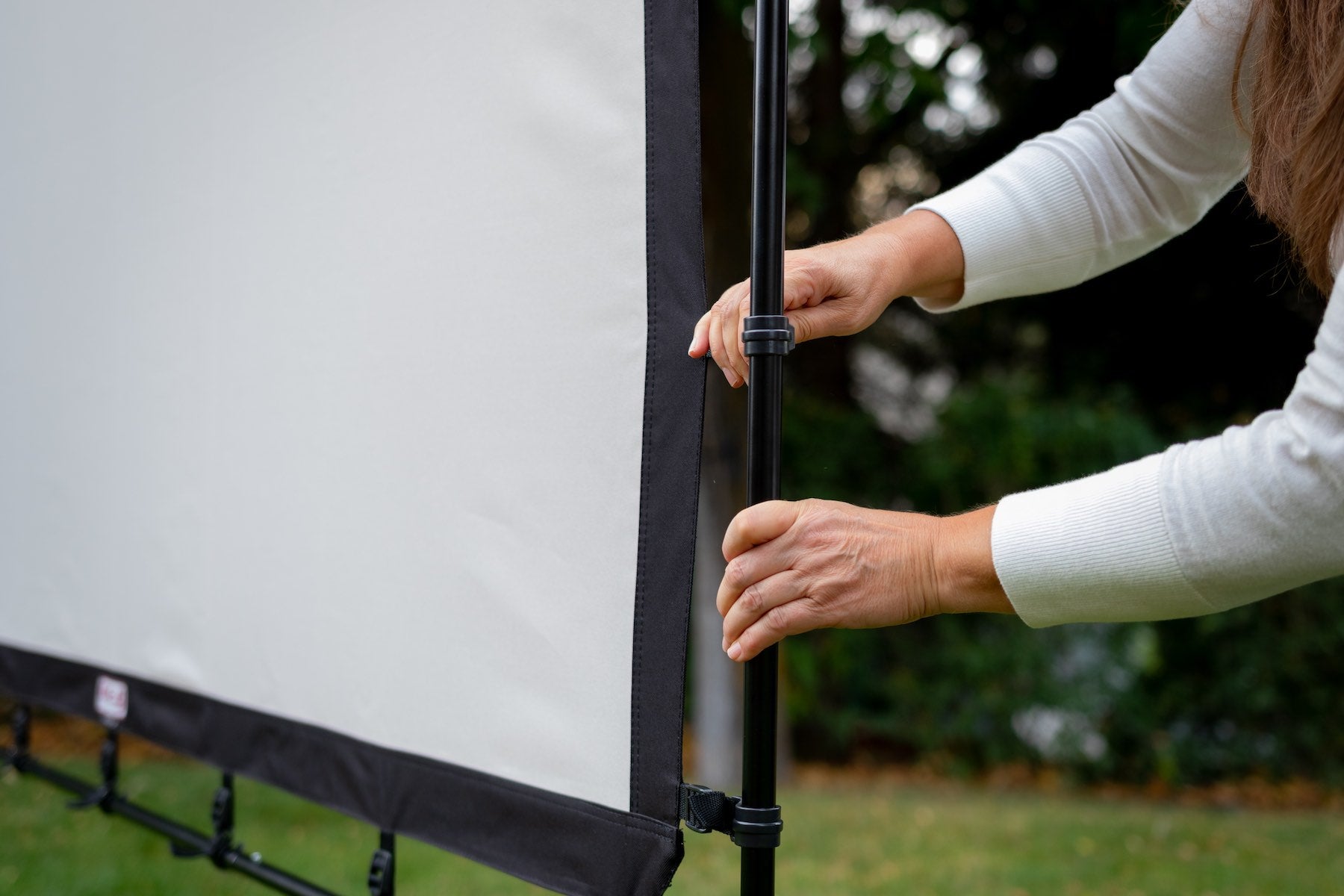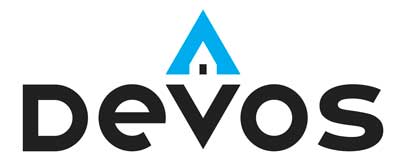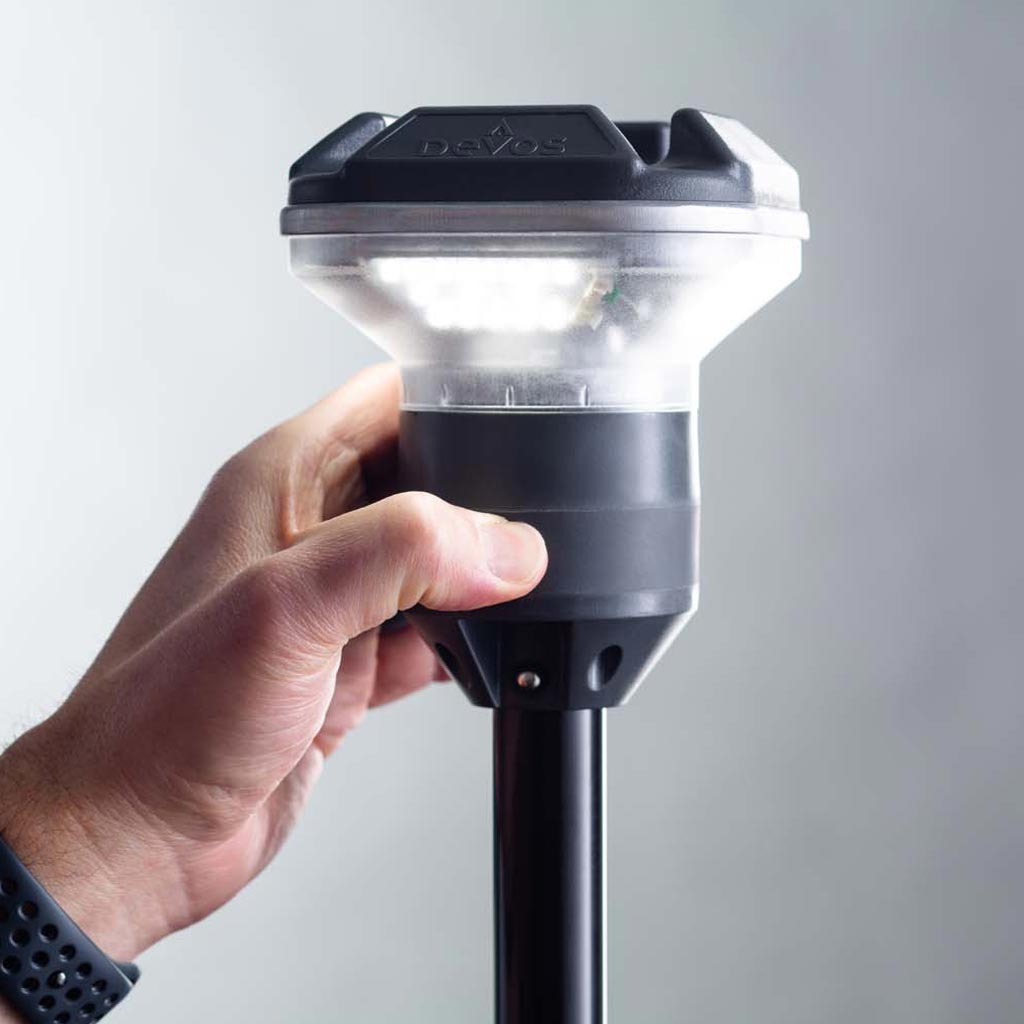
The truth about screen color in portable projector screens
There are countless variations of projector screens available today. One best ways to break the difference in screens is by better understanding screen color. There are basically 4 colors of projector screens: white, black, gray, and silver.
White. Brightness baby... but what about depth?
White screens are ubiquitous. They are used everywhere and generally make the most sense until you do a little digging. You would think that white would give you the best picture because it is, well, white! There are for sure some benefits of white screens. They do a great job of replicating color and brightness. But as with many other things in life there are some drawbacks. Because of the nature of the whiteness, it is more difficult to produce deep blacks. This contributes to a loss in contrast. Contrast is the ability to produce deep darks and bright whites which provides depth and tonal range in images. Contrast gives the image a more realistic 3D look. The flattening of the tonal range can produce an image that looks dull or washed out. Ambient light can contribute to a dull picture with a white screen. Ambient light may include other light sources in the room or in the area where you are projecting. It can also include light reflecting from the screen to light colored walls and back at the picture again. You will notice however that movie theaters and some in home theaters have bright white screens. This is because all the other walls in the room are dark black in color and prevent reflection back onto the screen. The also use expensive projectors with high contrast capability.
Black...? Really?
Black are high-performance screens that excel in providing high contrasts with deep blacks. These screens are expensive as they require special materials to provide reflectivity for bright whites. They also require high end projectors. My only real purpose in mentioning black screens is that it highlights the importance of contrast. That deep black tone is so important that some intelligent people figured out how to make a black screen! We will not spend any more time on these as they don’t apply to outdoor recreational screens because of the cost involved.
Gray. The compromise.
Gray screens were introduced to help increase contrast. Deeper blacks are more possible with a gray screen. There is a small loss in brightness. These work better than white screens where ambient light is present but there is a loss in color fidelity. Who wants to just compromise anyway?
Silver. The solution.
You may have heard the term “silver screen” when referring to old movies. In those days silver was added to the screens to improve reflection because of the low light capability of the projectors. Although modern projectors now produce plenty of light, the reflectivity of silver is still relevant. OEG Screens by Devos Outdoor use a light gray, silver-infused screen because it has all the benefits of a contrast producing gray screen and reflectivity that is brighter than a plain white screen. The contrasts pop and the images are vibrant. It resists ambient light pollution. It truly is the best of both worlds!
Why is it important?
Most bargain outdoor screens are nothing more than white polyester fabric stretched across a frame. Basically, all you're getting is a cheap frame holding a bed sheet. OEG Screens by Devos Outdoor utilize a durable 600 denier oxford nylon material woven with silver-infused threads to provide contrast, brightness and vibrant colors that work with the latest projector technology. A silver screen also means that you can start your outdoor movies earlier in the evening (nearby ambient light will not be as much of an issue.) Our oxford nylon screen is a thick sturdy material that will not ripple in the wind like bargain polyester screens and coupled with our robust steel or aluminum frame, Devos Outdoor screens have been proven to hold up over years of use. Devos has been a leader in outdoor projector screen design for 10 years when we first developed this product for Camp Chef.
Devos Outdoor projector screens are slightly more expensive than the cheap import product found on other mass e-comm sites but the difference in quality is significant. You'll have a much better experience long term spending a little more for a higher quality product.



Leave a comment
This site is protected by hCaptcha and the hCaptcha Privacy Policy and Terms of Service apply.